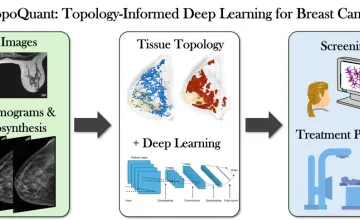AAU universities conduct a majority of the federally funded university research that contributes to our economic competitiveness, health and well-being, and national security. AAU universities are growing our economy through invention and innovation while preparing the next generation of scientists and engineers for global leadership. By moving research into the marketplace AAU universities are helping to create jobs, and provide society with new medicines and technologies.

UMD geologists uncovered evidence of a section of seafloor that sank into the Earth's mantle when dinosaurs roamed the Earth; it's located off the west coast of South America in a zone known as the East Pacific Rise.

Novel research supported by NCI could lead to more specific predictive disease models

A new University of Kansas study reveals parents seeking health care information for their children trust AI more than health care professionals when the author is unknown, and parents rate AI generated text as credible, moral and trustworthy.

Hypertension and amyloid plaques can separately cause dementia. Having both increases a person’s odds of developing cognitive decline, a new study finds
Explore More: University Research
You can filter stories by the university.
Anthracyclines can be effective against breast cancer but often have toxic side effects. Stanford researchers used gene expression levels to identify women most likely to benefit from the drugs, regardless of breast cancer type or stage.
A large study of women with breast and ovarian cancer has revealed significant gaps between national guidelines for genetic testing and actual testing practices, according to researchers from Stanford and five other institutions.
Investigators at Rutgers University - New Brunswick have found that approximately 30 percent of men with localized prostate cancer may have alterations in DNA damage response pathways. Their research not only provides insight into the biology of prostate malignancies, but also it may expand treatment options for these patients.
Immunotherapy has great promise as a cancer treatment, but current therapies only work in some. Now, Stanford researchers are testing the idea that microorganisms in our guts might be the deciding factor.
A study led by UCLA researchers found that adding ribociclib, a targeted therapy drug, to standard hormone therapy significantly improves overall survival in postmenopausal women with advanced hormone-receptor positive/HER2- breast cancer, one of the most common types of the disease.
